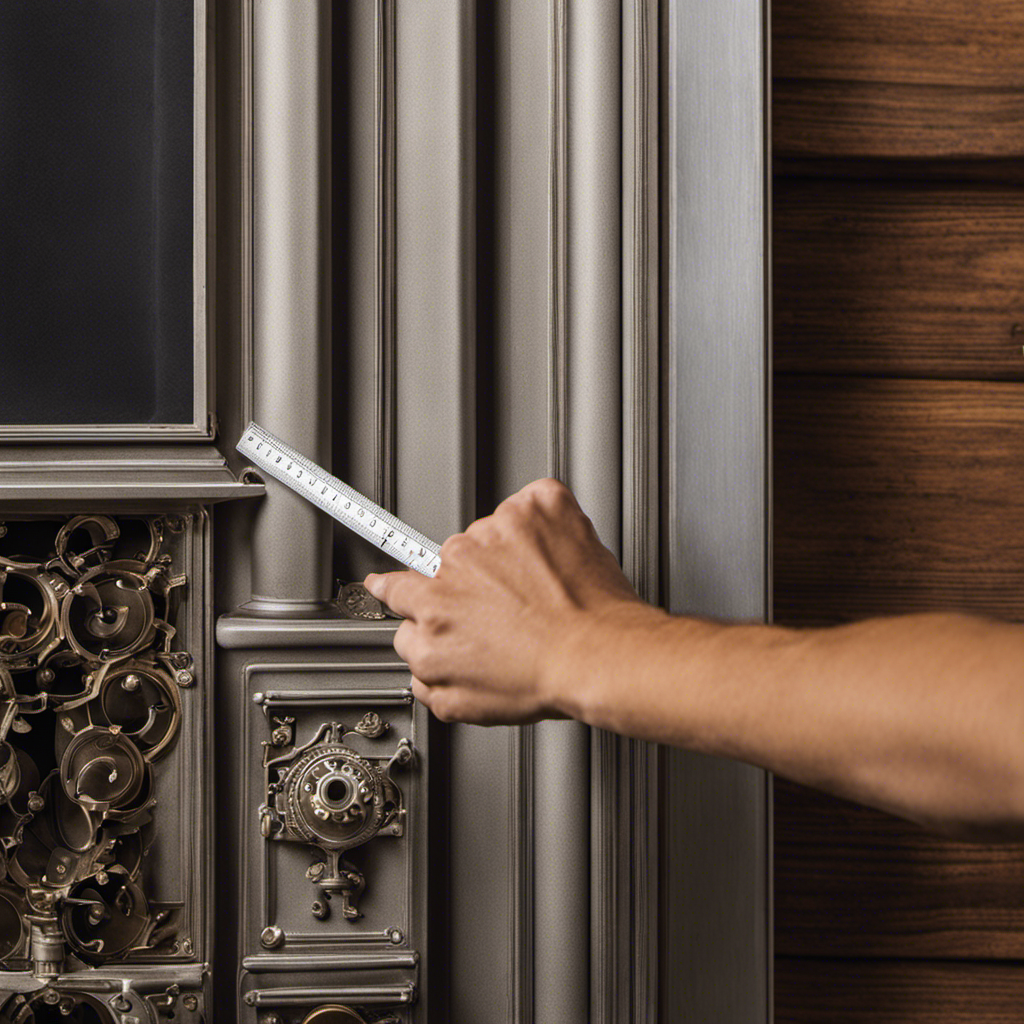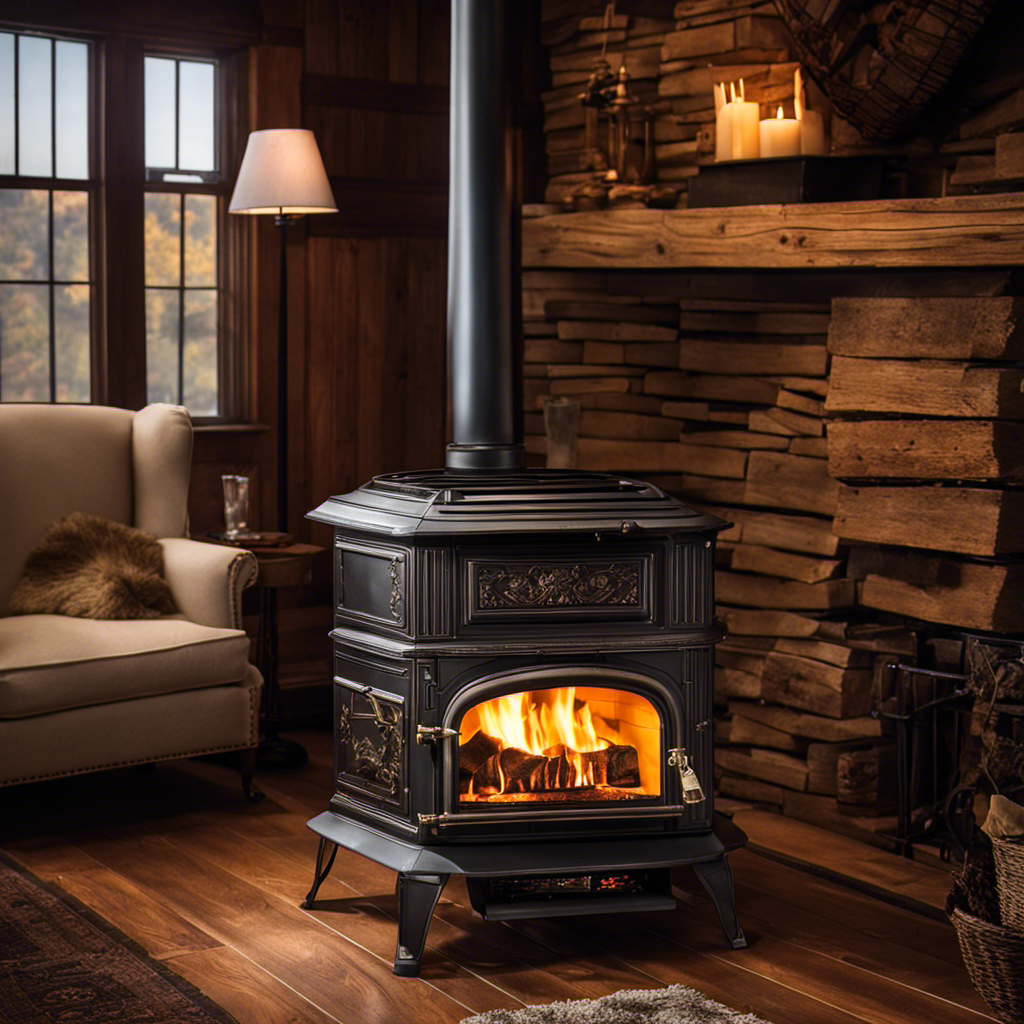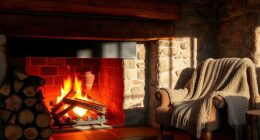
It is important to understand that the quantity of logs you use in your wood stove can significantly impact its efficiency. Achieving the perfect balance is essential for maximizing heat production and ensuring efficient burning.
In this article, I will guide you through the factors to consider when calculating log quantity, how to determine the size of logs, and recommended placement techniques.
By monitoring and adjusting log quantity, you can achieve the perfect balance of heat and fuel consumption for your wood stove.
Key Takeaways
- Size of the wood stove and burn time desired are important factors when calculating log quantity.
- Proper log placement techniques, such as positioning logs for optimal airflow and using the 2-2-2 rule, can ensure efficient burning and reduce risks.
- Achieving the perfect balance of heat and fuel consumption involves calculating the heating capacity, adjusting airflow, and using well-seasoned logs of appropriate size.
- Monitoring and adjusting log quantity, airflow, and using seasoned wood can optimize wood stove performance while minimizing fuel consumption.
Factors to Consider When Calculating Log Quantity
When calculating log quantity, I’ve to consider factors such as the size of the wood stove and the burn time I want.

One important factor is the difference between seasoned and green logs and their impact on burn time. Seasoned logs have been dried for at least six months, which makes them burn more efficiently and produce more heat. On the other hand, green logs contain more moisture and require more time and energy to burn.
Another factor to consider is the type of wood. Different species have different burning characteristics. Hardwoods like oak and maple burn longer and produce more heat, while softwoods like pine burn faster but produce less heat.
By understanding these factors, I can determine the right log quantity for my wood stove and ensure efficient and effective heating.
Now, let’s explore how to determine the size of logs for your wood stove.
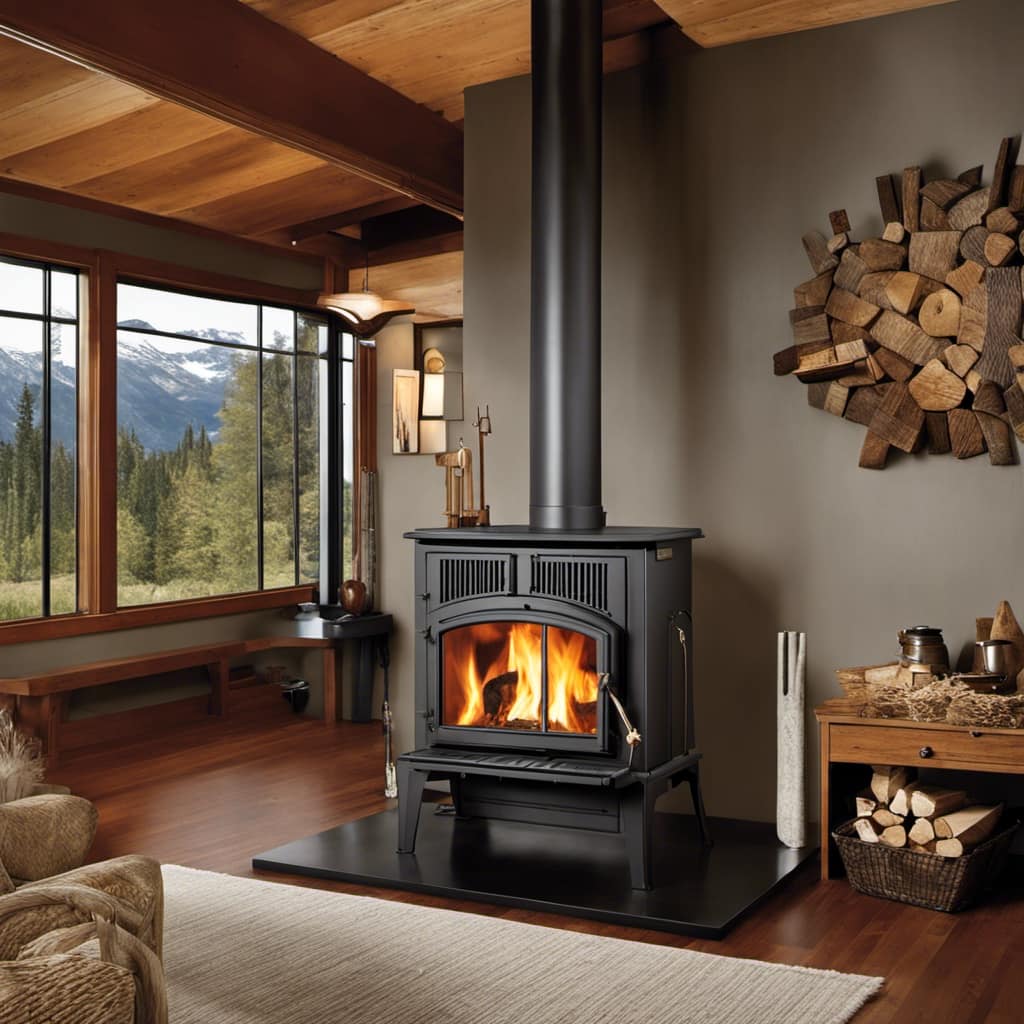
How to Determine the Size of Logs for Your Wood Stove
I personally find it helpful to measure the size of my wood stove to determine the appropriate log size for optimal heat production. Calculating log size is crucial in maximizing wood stove efficiency.
Here are three key factors to consider when determining the size of logs for your wood stove:
-
Stove Capacity: Knowing the dimensions of your wood stove will help you determine the maximum log length it can accommodate. This ensures that the logs fit properly and allow for proper airflow.
-
Heat Output: Different wood species have varying energy content. By calculating the log size, you can estimate the heat output produced by the wood stove. This allows you to choose the right log size to achieve the desired warmth.

-
Burn Time: Larger logs burn longer, while smaller ones burn faster. By considering burn time, you can plan your log supply accordingly and avoid frequent refueling.
Recommended Log Placement Techniques for Efficient Burning
To achieve efficient burning, it’s important to properly position the logs and ensure proper airflow within the wood stove. This not only maximizes heat output, but also reduces the risk of chimney fires and carbon monoxide buildup.
When it comes to log placement, there are a few common mistakes that should be avoided. Firstly, stacking logs too tightly can restrict airflow and result in incomplete combustion. On the other hand, spacing logs too far apart can cause excessive air circulation, leading to rapid burning and wasted fuel.
To find the right balance, consider using the 2-2-2 rule. This means placing two smaller logs on the bottom, followed by two medium-sized logs in the middle, and two larger logs on top. This arrangement allows for proper airflow and gradual burning.
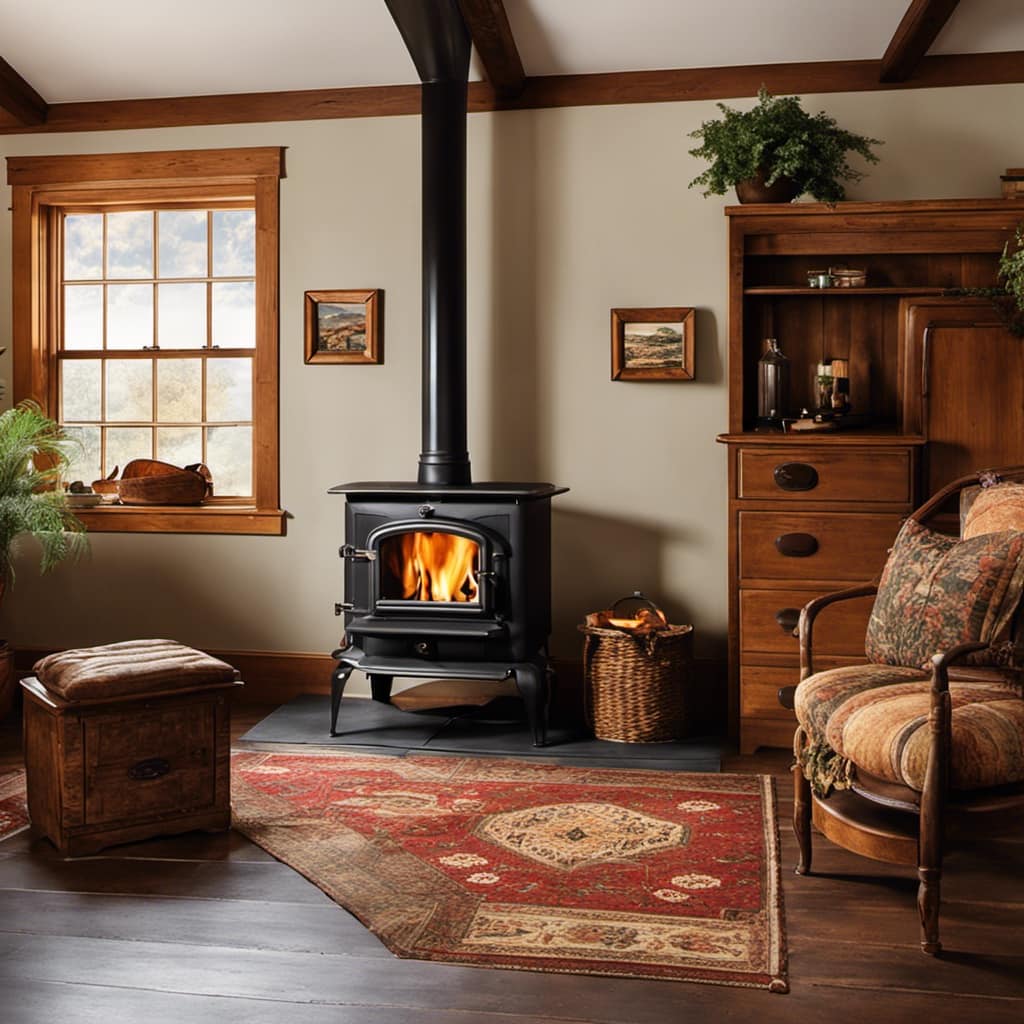
Remember to always follow wood stove safety precautions and regularly inspect your stove for any signs of damage or malfunction.
Achieving the Perfect Balance of Heat and Fuel Consumption
In order to achieve the perfect balance of heat and fuel consumption, I rely on adjusting the airflow and carefully monitoring the size and placement of the logs in my wood stove. By following these steps, I’m able to maximize the burn time and ensure that my wood stove operates at its optimal heating capacity.
-
Calculating Heating Capacity: Before starting a fire, it’s important to determine the heating capacity of your wood stove. This will help you gauge the amount of heat it can produce and how many logs you should use.
-
Adjusting Airflow: By controlling the airflow, you can regulate the rate at which the logs burn. Opening the damper allows for more oxygen, resulting in a hotter fire. Closing it partially reduces the airflow, extending the burn time.
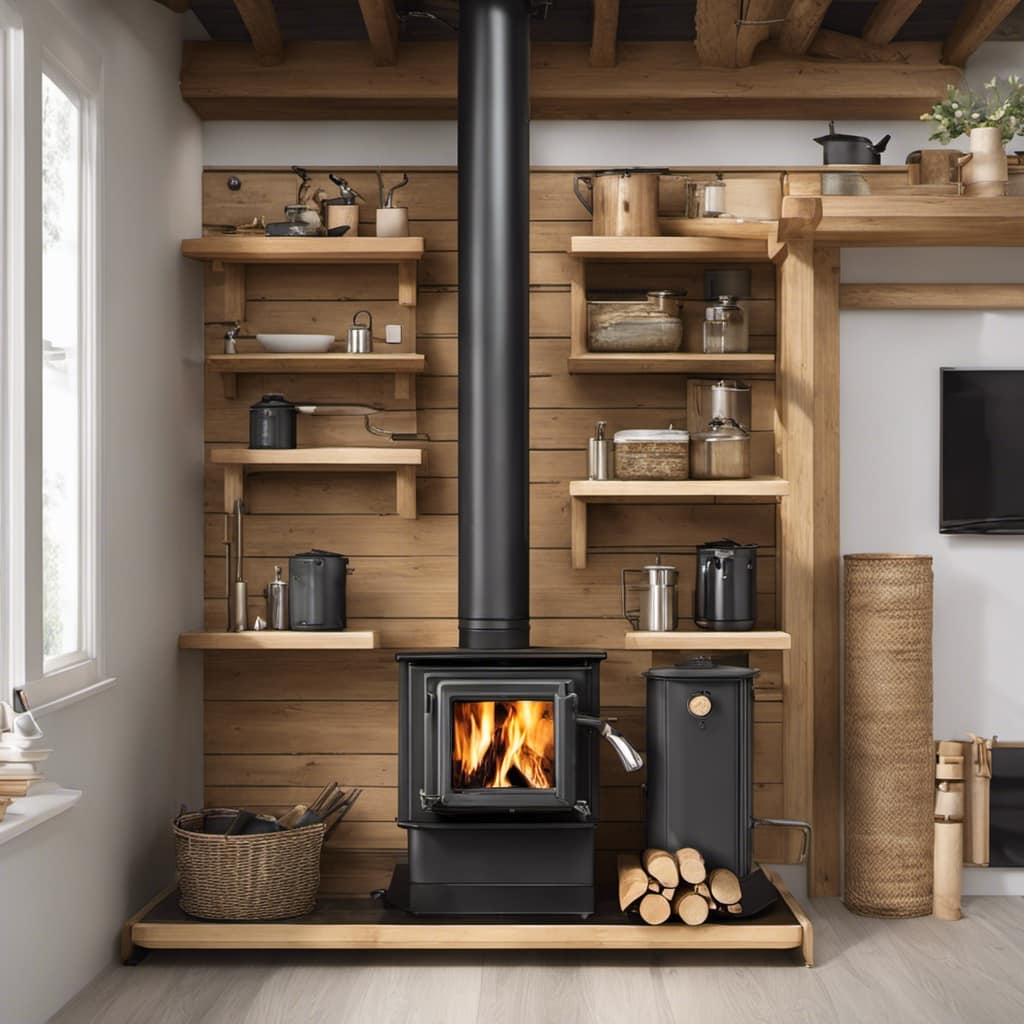
-
Size and Placement of Logs: Using well-seasoned logs of the appropriate size is crucial. Too large logs may not burn efficiently, while too small logs may burn too quickly. Placing the logs in a way that allows for proper air circulation ensures an even burn and maximizes fuel consumption.
Monitoring and Adjusting Log Quantity for Optimal Wood Stove Performance
By carefully monitoring and adjusting the quantity of logs in my wood stove, I can ensure optimal performance and efficient fuel consumption. Adjusting the airflow in the stove is crucial for achieving the right balance of heat and fuel efficiency.
When it comes to log quantity, it’s important to strike a balance. Putting too few logs may not generate enough heat, while overcrowding the stove can lead to poor airflow and incomplete combustion.
Additionally, using seasoned wood has several advantages. Seasoned wood has been properly dried, reducing its moisture content. This results in cleaner and more efficient burning, as well as reduced creosote buildup in the chimney.

Ultimately, by carefully considering log quantity and using seasoned wood, I can maximize the performance of my wood stove while minimizing fuel consumption.
Frequently Asked Questions
What Types of Wood Are Recommended for Burning in a Wood Stove?
Different types of wood for burning in a wood stove include hardwoods like oak and maple, which burn longer and produce more heat. Softwoods like pine can be used as well but burn faster. Properly stacking logs in a wood stove ensures efficient burning.
Can I Use Unseasoned or Wet Logs in My Wood Stove?
Burning wet logs can be a recipe for disaster. The impact of burning unseasoned wood is not only inefficient but can also lead to excessive smoke, creosote buildup, and potential chimney fires.
Is It Necessary to Have a Specific Amount of Air Circulation Around the Logs in the Wood Stove?
Proper air circulation is crucial for efficient wood stove operation. To maximize heat output, ensure there is enough space between logs. This allows for better combustion and prevents smoldering.
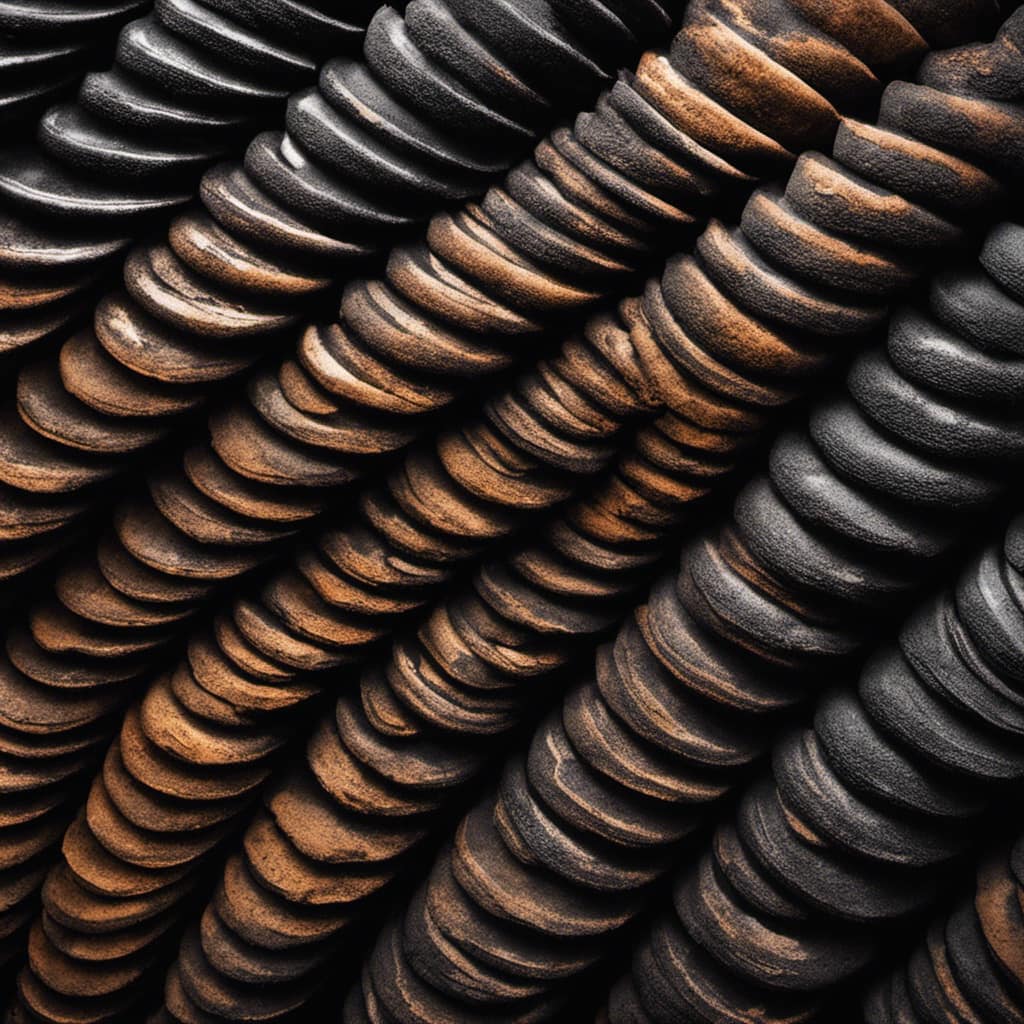
Are There Any Safety Precautions I Should Take When Using My Wood Stove?
When using a wood stove, it is important to take safety precautions. Proper ventilation ensures sufficient air flow, while fire prevention measures like using a screen and keeping flammable materials away help minimize risks.
How Often Should I Clean and Maintain My Wood Stove?
I clean and maintain my wood stove at least once a year to ensure it operates efficiently and safely. It’s important to follow the manufacturer’s guidelines for cleaning. As for logs, it depends on the size and heating needs of your stove.
Conclusion
In conclusion, finding the right number of logs for your wood stove is crucial for efficient and optimal performance.
By considering factors such as log size, placement techniques, and monitoring fuel consumption, you can achieve the perfect balance of heat and efficiency.
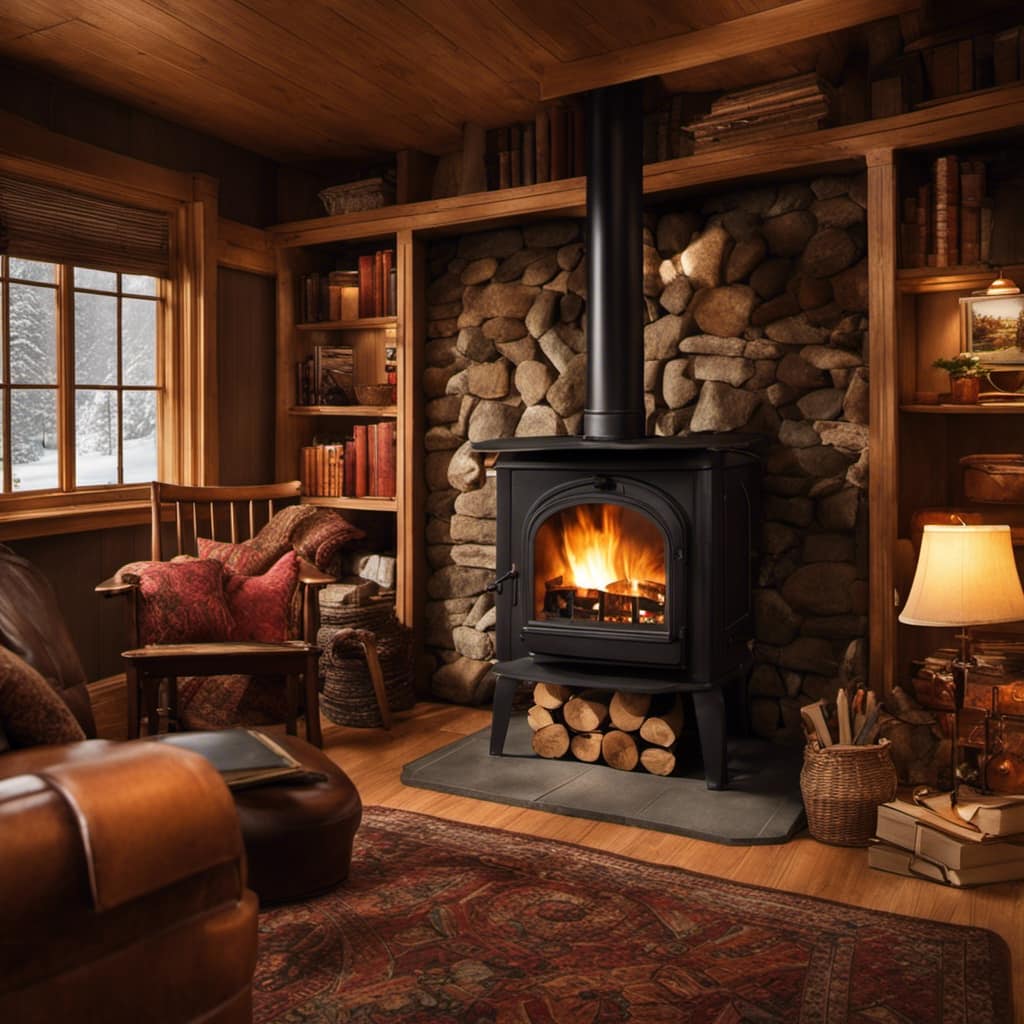
Imagine cozy evenings by the warm glow of your wood stove, knowing that you have mastered the art of maximizing heat output while minimizing fuel usage.
With these tips, you can enjoy the full potential of your wood stove all winter long.
Growing up surrounded by the vast beauty of nature, Sierra was always drawn to the call of the wild. While others sought the comfort of the familiar, she ventured out, embracing the unpredictable and finding stories in the heartbeat of nature.
At the epicenter of every remarkable venture lies a dynamic team—a fusion of diverse talents, visions, and passions. The essence of Best Small Wood Stoves is crafted and refined by such a trio: Sierra, Logan, and Terra. Their collective expertise has transformed the platform into a leading authority on small wood stoves, radiating warmth and knowledge in equal measure.



